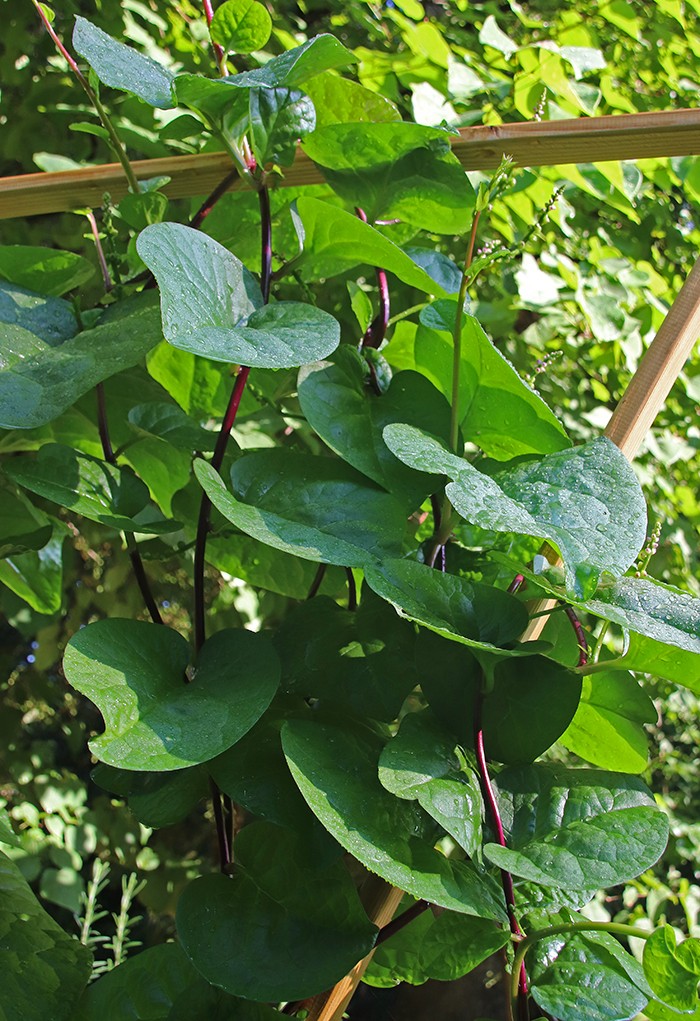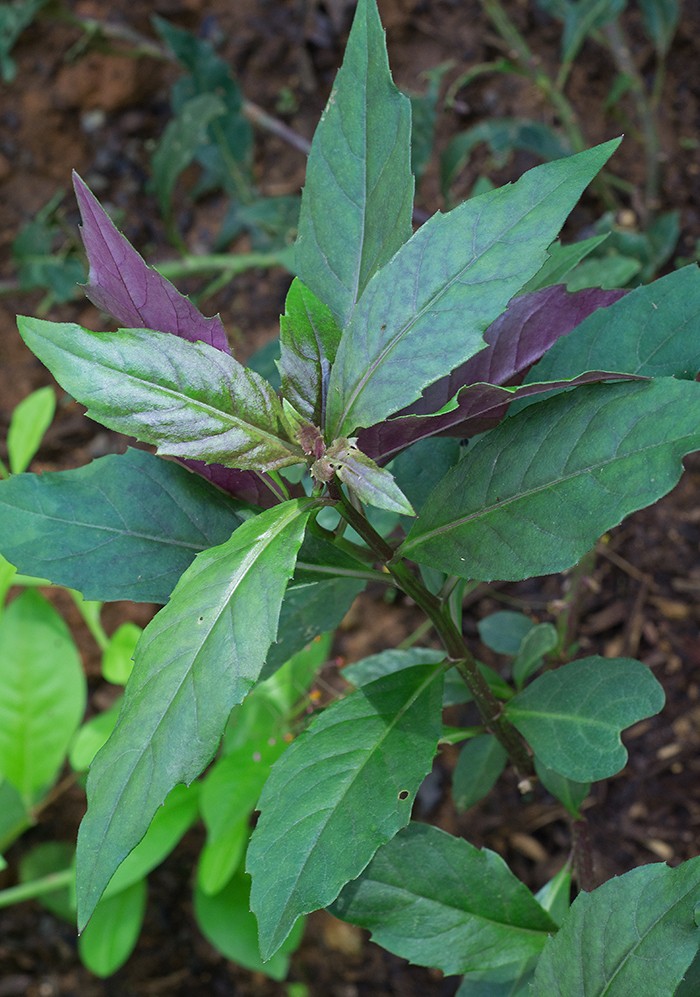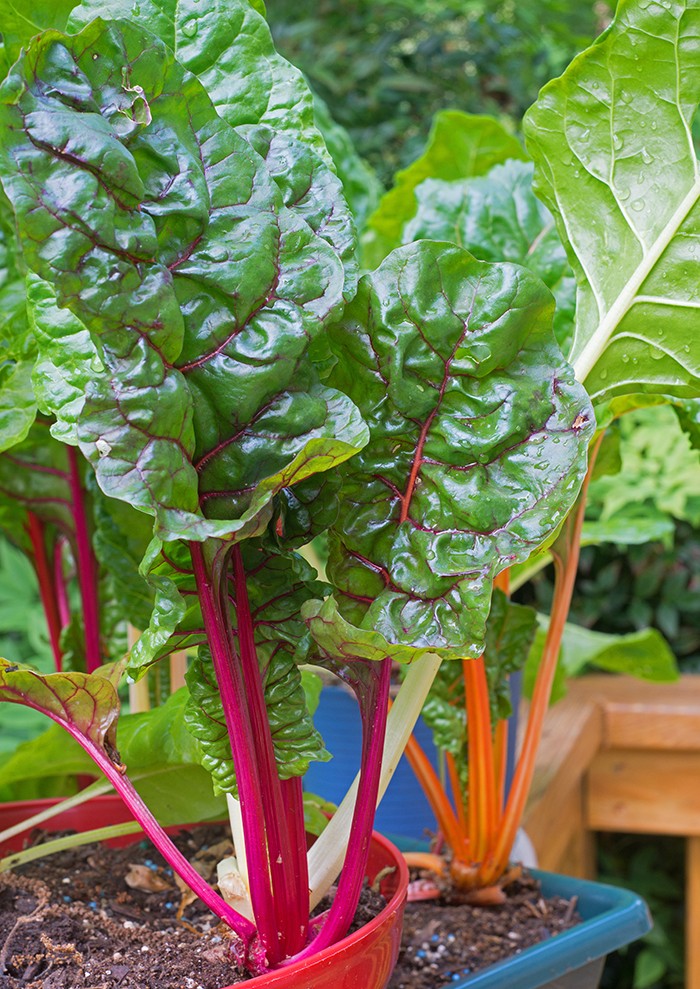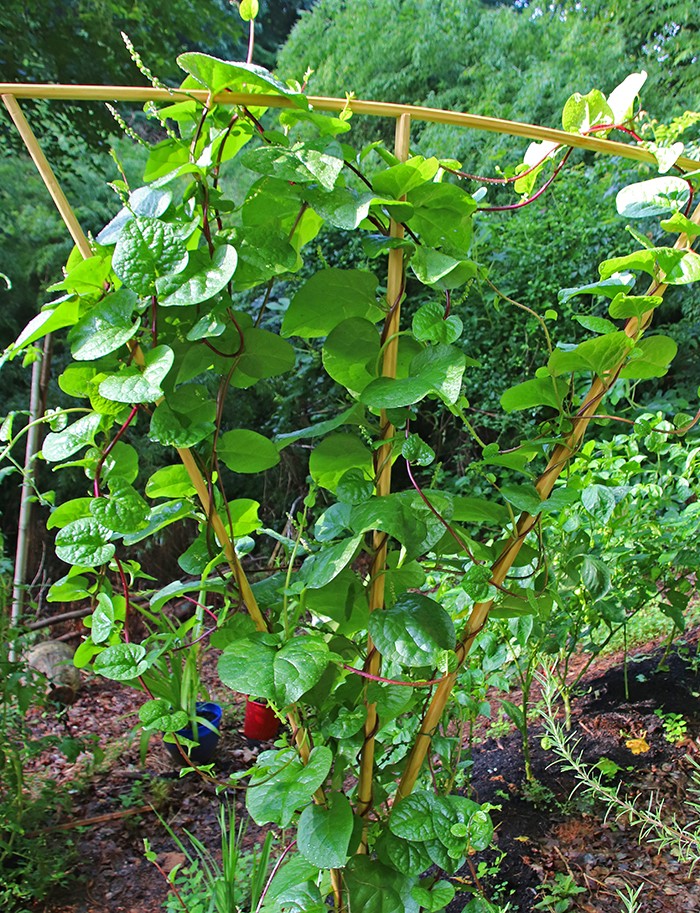Spinach is a delectable springtime vegetable many local gardeners enjoy growing for salads and cooked meals. Unfortunately, as temperatures head towards the typical sizzle of summer, spinach bolts and its leaves turn bitter, meaning fresh harvests of these tasty greens are ending soon.
But, with spinach’s seasonal decline, there are new opportunities. Now is a good time to experiment and try heat-resisting substitutes that can have similar usefulness in the kitchen. Allow me to introduce two popular possibilities:

Malabar Spinach
Malabar Spinach (Basella sp.). It is not related to true spinach (Spinacia oleracea), but the taste of this leafy veggie is close, along with a slight, peppery twang. However, having thicker, almost succulent leaves, my best description of its texture is semi-squishy. I enjoy chomping on Malabar spinach raw (young leaves taste the best), but although they can be cooked, have shied away from heating up these greens because they can create a gelatinous yuck similar to boiled okra.
Malabar spinach originates from the Asian tropics as a perennial vine. It does love our hot summers, but is not cold-hardy here, so grow this exotic edible as an annual. It is also called “climbing spinach,” and I know why — for the last three years, my vines zipped up an 8-foot-tall trellis I built for them and hung off the sides, looking for more territory to conquer.
This vine resists bolting in full sun, but extended dry conditions can turn the leaves bitter, so water regularly and mulch.
My first plants came from the Farmer’s Market in Raleigh, but then I found easy-to-grow seeds online at Park Seed (parkseed.com).

Okinawa Spinach
Okinawa Spinach (Gynura crepioides). This able spinach alternative, which hails originally from Southeast Asia, has similar tasting leaves accented by a light nutty flavoring with a hint of pine. A tender perennial, it makes a nice addition to any salad, and certainly isn’t a stranger to tempura and stir-fry dishes.
Okinawa spinach is also a rather pretty plant. Growing about 2 feet high and wide, it is adorned by slim, serrated leaves that are green on top and a catchy purple underneath. The leaves typically won’t turn bitter in the summer simmer, but to help them maintain their best flavor, provide at least some light mid-afternoon shade and water regularly.
Okinawa spinach can be e-purchased from specialty growers on sites such as Etsy (etsy.com), but I have stayed local and grabbed my starter plants at Big Bloomers (bigbloomersflowerfarm.com) in Sanford.

Swiss Chard
Another leafy green that can be used as a spinach replacement in the summer is Swiss chard. A distant spinach relative, Swiss chard is comparable in flavor and possibilities for kitchen creations, both cooked and raw.
As a bonus, the stems, which with cultivars such as ‘Bright Lights’ and ‘Ruby Red’ are very colorful, can also be eaten and have a yummy, celery-like crunch. Although this alt-spinach resists turning bitter when grown in full sun, providing some afternoon shade will help stabilize its desired tastiness through the long growing season.
Because Swiss chard can be an attractive, low-growing plant, consider showing off a few as edible ornamentals in well-placed pots.
To Do in the Garden
May
- While giving summer spinaches a whirl, don’t forget now is also the prime time to plant such warm-season veggie favorites as squash, tomatoes, pumpkins, eggplant, peppers, watermelons, okra, cucumbers and green beans.
- Don’t be too quick to mulch annual flowers and vegetables. Leave the growing ground bare through this month to allow the sun to heat up the soil, which will help stimulate stronger development of young roots.
- Warmer temperatures also mean it’s time to turn such heat-seeking bulbs as gladioli, dahlias, caladiums and cannas loose in the ornamental garden.
- May is a good month to bring many houseplants outside for a summer vacation. Just be sure to set them in areas of filtered shade, so the sun’s strong summer rays won’t burn their leaves.







